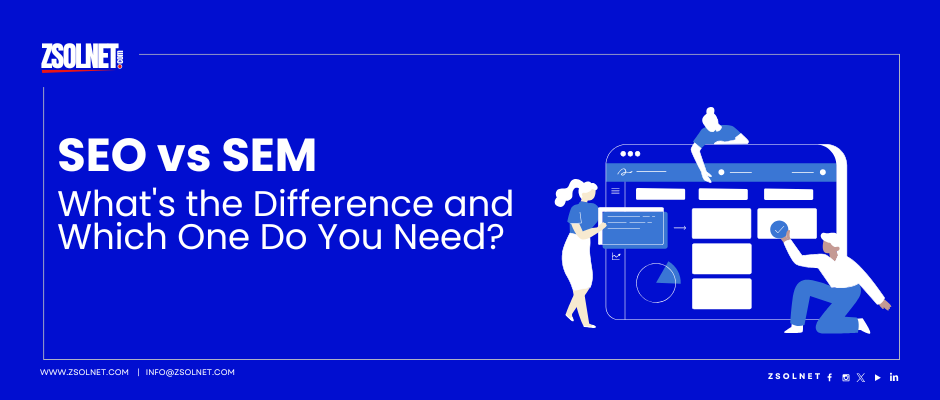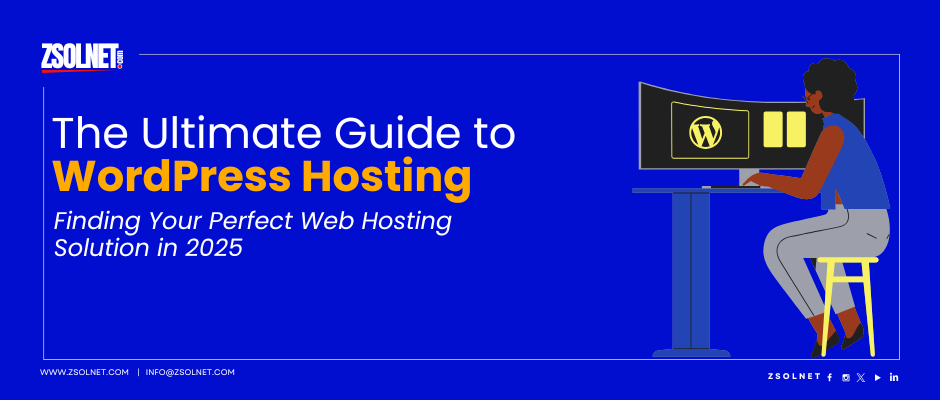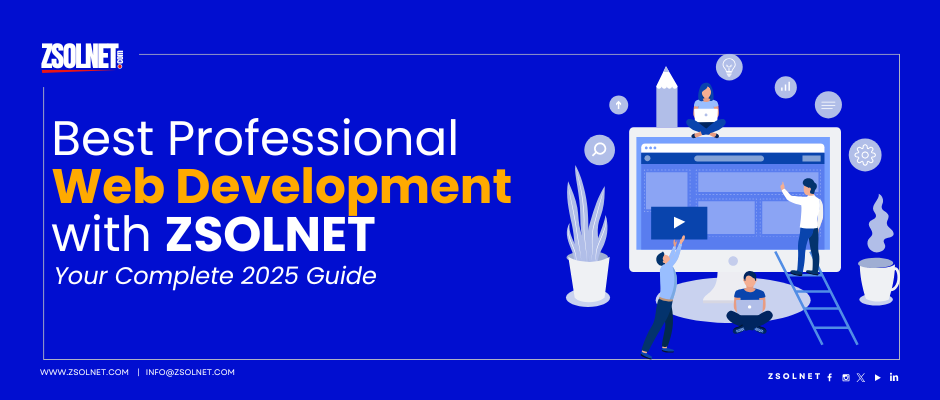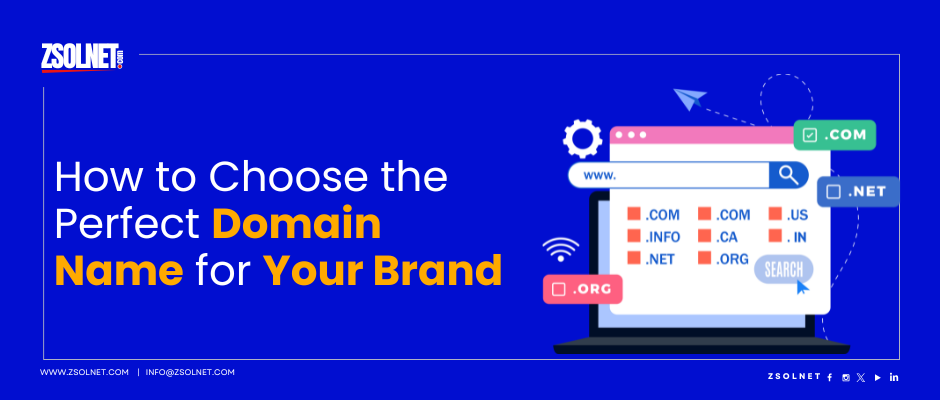SEO vs SEM for small business success requires understanding the fundamental differences between these two digital marketing approaches. In today’s competitive online landscape, getting your small business noticed can feel like trying to be heard in a crowded room. While SEO and SEM sound similar and work toward related goals, understanding their distinct advantages is crucial for developing an effective digital marketing strategy that fits your specific business needs and budget.
What Are SEO and SEM?
Search Engine Optimization (SEO) refers to the practice of optimizing your website and online content to rank higher in organic (non-paid) search engine results. It’s about making your website more attractive to search engines like Google through various techniques that improve its relevance and authority.
Search Engine Marketing (SEM) encompasses paid strategies to increase visibility in search engine results pages (SERPs). While SEM sometimes refers to all search marketing efforts, it’s most commonly associated with paid search advertising, such as Google Ads (formerly Google AdWords).
The Key Differences Between SEO and SEM
1. Cost Structure
SEO: Primarily requires investment in time and expertise rather than direct media spending. While you might pay an SEO specialist or agency, you’re not paying for the actual placement in search results.
Real-world example: Sarah’s Bakery invests in optimizing their website with local keywords like “best cupcakes in Portland” and creates regular blog content about baking techniques and seasonal treats. This ongoing effort gradually improves their organic search ranking without per-click costs.
SEM: Involves direct costs through a pay-per-click (PPC) model, where you pay each time someone clicks on your ad.
Real-world example: When Sarah’s Bakery has a special Valentine’s Day promotion, they run Google Ads targeting “Valentine’s Day desserts” and set a budget of $300 for the month. They pay approximately $1.50 each time someone clicks on their ad.
2. Timeline for Results
SEO: Generally takes longer to show results, often 3-6 months or more before significant improvements in rankings occur.
Real-world example: Mike’s Plumbing Service begins an SEO strategy in January but doesn’t see substantial traffic increases until May, when their optimized content about “emergency plumbing repair” starts ranking on the first page of Google.
SEM: Delivers immediate visibility—your ads can appear at the top of search results as soon as your campaign goes live.
Real-world example: When Mike experiences a slower season, he launches a Google Ads campaign on Monday and by Tuesday is already receiving calls from people who found his business through the paid ads.
3. Longevity of Results
SEO: Once established, SEO benefits can continue with relatively less maintenance, providing long-term value.
Real-world example: Greenfield Landscaping’s article about “drought-resistant garden plants” continues to drive traffic to their website for years after publication with only occasional updates.
SEM: Results stop when you stop paying for ads. Your visibility disappears when your campaign ends or your budget runs out.
Real-world example: Elena’s Tax Services runs ads during tax season that generate significant leads, but when they pause their campaign after April 15th, their website traffic drops dramatically.
4. Position in Search Results
SEO: Helps you rank in the main, organic search listings that appear below ads.
SEM: Places your listings in the designated ad sections, typically at the top or bottom of search results pages.
Pros and Cons of SEO for Small Businesses
Pros:
- Cost-Effective Long-Term Strategy: While it may take time to build, SEO can deliver consistent traffic without ongoing per-click costs.
- Trust and Credibility: Users often trust organic results more than advertisements.
- Sustainable Results: Good SEO work continues to pay dividends over time.
- Higher Click-Through Rates: Organic results typically receive more clicks than paid ads for many queries.
Cons:
- Time-Intensive: Results take time to materialize—not ideal if you need immediate traffic.
- Continuous Work Required: SEO is never “done”; it requires ongoing attention.
- No Guarantees: Search algorithms change frequently, and rankings can fluctuate.
- Complex and Technical: May require specialized knowledge or outside help.
Pros and Cons of SEM for Small Businesses
Pros:
- Immediate Visibility: Ads can put you at the top of search results instantly.
- Highly Targeted: Advanced targeting options allow you to reach specific audiences.
- Measurable and Controllable: Easy to track ROI and adjust campaigns in real-time.
- Geographic Targeting: Excellent for local businesses wanting to reach nearby customers.
Cons:
- Ongoing Costs: You pay for every click, which can add up quickly.
- Stops Working When You Stop Paying: No lasting value once campaigns end.
- Ad Blindness: Some users automatically ignore paid results.
- Learning Curve: Effective campaign management requires skill and knowledge.
Which Strategy Should Your Small Business Choose?
The answer isn’t necessarily one or the other—many successful small businesses use both approaches. However, here’s a framework to help you decide where to focus your efforts:
Consider focusing on SEO if:
- You’re building for the long term and can wait for results
- You have limited marketing budget but can invest time
- Your industry has high cost-per-click rates that make SEM expensive
- You create valuable content that can naturally attract links and shares
- You operate in a niche with less competitive keywords
Consider prioritizing SEM if:
- You need immediate visibility and traffic
- You’re launching a new business or product
- You want highly targeted geographic reach
- You operate in a seasonal business and need quick results during peak times
- You want to test market response before investing in longer-term strategies
Real-World Implementation for Small Businesses
Implementing SEO:
- Local SEO Focus: Ensure your Google Business Profile is complete and updated regularly with photos, posts, and accurate business information.
- On-Page Optimization: Make sure each page on your website focuses on a specific keyword relevant to your business. For example, a pet grooming service might optimize different pages for “dog grooming,” “cat grooming,” and “pet nail trimming.”
- Content Creation: Develop helpful resources that answer common customer questions. A financial advisor might create guides on “retirement planning for small business owners” or “tax-saving strategies for the self-employed.”
- Technical SEO: Ensure your website loads quickly, works well on mobile devices, and has a clear structure that search engines can easily navigate.
Implementing SEM:
- Start Small: Begin with a modest daily budget ($5-20 per day) targeting your most valuable keywords.
- Focus on Relevance: Create ads specifically tailored to the search terms you’re bidding on. If someone searches for “emergency plumber near me,” your ad should specifically mention emergency services and your location.
- Use Ad Extensions: Take advantage of all relevant ad extensions like location information, callouts, and site links to make your ads more prominent and informative.
- Monitor and Adjust: Pay close attention to which keywords and ad variations perform best, then allocate more budget to the winners and pause underperforming elements.
Finding the Right Balance of SEO vs SEM for Small Business Success
For most small businesses, the ideal approach is a balanced strategy that incorporates both SEO and SEM working together:
- Use SEM to generate immediate traffic while your SEO vs SEM for small business strategy develops momentum
- Target high-converting keywords with SEM where organic competition is fierce
- Focus SEO efforts on informational content that builds your authority in your industry
- Adjust your SEM spending seasonally based on your small business cycle
- Analyze data from both SEO and SEM channels to inform your overall digital marketing strategy
Conclusion: Optimizing Your SEO vs SEM for Small Business Strategy
Rather than viewing SEO vs SEM for small businesses as competing strategies, think of them as complementary tools in your digital marketing toolkit. SEO builds lasting value and credibility, while SEM offers flexibility, control, and immediate results.
For most small businesses, the question isn’t which approach to use exclusively, but rather how to effectively balance both SEO and SEM tactics within your available resources. The most successful small business digital strategies leverage the strengths of both SEO vs SEM approaches to create a consistent online presence that drives growth and connects with customers at every stage of their journey.
Ready to Boost Your Online Visibility?
At ZSOLNET, we specialize in creating customized SEO and SEM strategies for small businesses like yours. Our team understands the unique challenges you face and can help you develop a cost-effective approach that drives real results.
Contact us today for a free consultation to discuss how we can help your business become more visible online, whether through organic search optimization, targeted paid campaigns, or a strategic combination of both.



